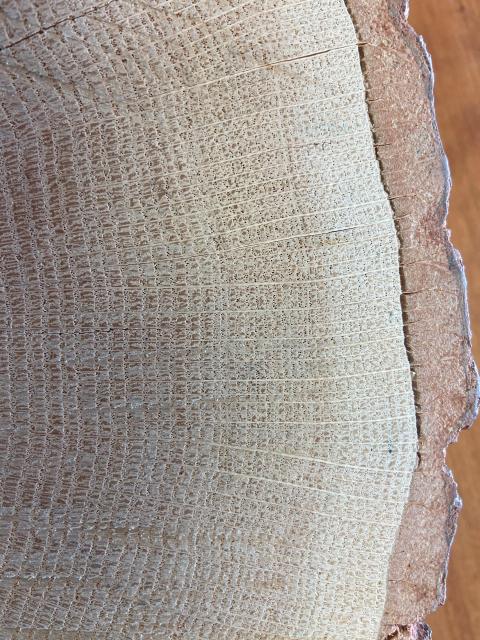How Trees Grow, Part II
In part one of this blog series, we focused on the height growth of trees. In part two, the focus is on the diameter growth (or thickening) of stems, branches, and roots. Height growth is driven by elongation in apical meristems; diameter growth occurs in lateral meristems. The two main types of lateral meristems in trees are the vascular cambium and the cork cambium. The vascular cambium produces conductive material (xylem and phloem) that moves water and nutrients throughout the tree, and the cork cambium produces the tree’s protective outer bark. Growth in the cambium leads to an increase in tree girth.
In temperate regions, the vascular cambium produces thin-walled springwood (or earlywood) in the spring and thicker-walled latewood in summer and autumn. Taken together, springwood and earlywood form the annual growth rings which foresters use to age trees. It is important to note that a tree’s cambium is in the outer few inches of the stem and easily damaged by careless operation of lawnmowers, string trimmers, snowplows, and construction and logging equipment.
When it comes to tree growth, photosynthate, that is, the “food” produced by a tree through photosynthesis, is not allocated equally. After meeting its basic needs, a tree will typically allocate resources to height growth before diameter growth. In a forest, the reason seems clear: if competitors overtop a tree, it may not receive enough sunlight for survival. On the other hand, open grown trees, like in parks or yards, present a slightly different scenario – they may “opt” to expand their crowns laterally instead of vertically due to lower competition for sunlight.

The amount of food a tree produces is related to its crown size. To help maximize tree growth, foresters often prescribe thinning trees in woodlots. By reducing competition for light, water, and nutrients, trees can produce bigger crowns with more foliage. This usually means that a tree will have more resources available to allocate for diameter growth and, in turn, volume growth. For example, I have been tracking diameter growth in a pine stand in Exeter following thinning in June 2022 and found that the residual trees are growing at a (modest) rate of 1.64 inches per decade versus only 1.03 inches in an un-thinned control area. Over time, as the trees respond to increased sunlight and water because of the thinning, I am expecting to see diameter growth continue to improve to about two inches per decade – about double the growth rate of the unreleased trees.
A central question that foresters wrestle with is “how much to thin?” If too few trees are removed, there may be little or no response in diameter growth. If too many trees are thinned, trees may respond by producing lots of lower branches that will reduce future lumber quality. To help, many foresters use stocking charts to guide their thinning operations in even-aged stands.
If you have questions about managing your woodlot or trees, check out UNH Extension’s Forests & Trees website or contact your County Forester for more information.
Have a question about your woods? Contact your Extension County Forester today!
Do you love learning about stuff like this? Subscribe to the NH Woods & Wildlife Newsletter.
A quarterly newsletter providing private woodlot owners in New Hampshire with woodlot management news, pest updates, resources, and more.

